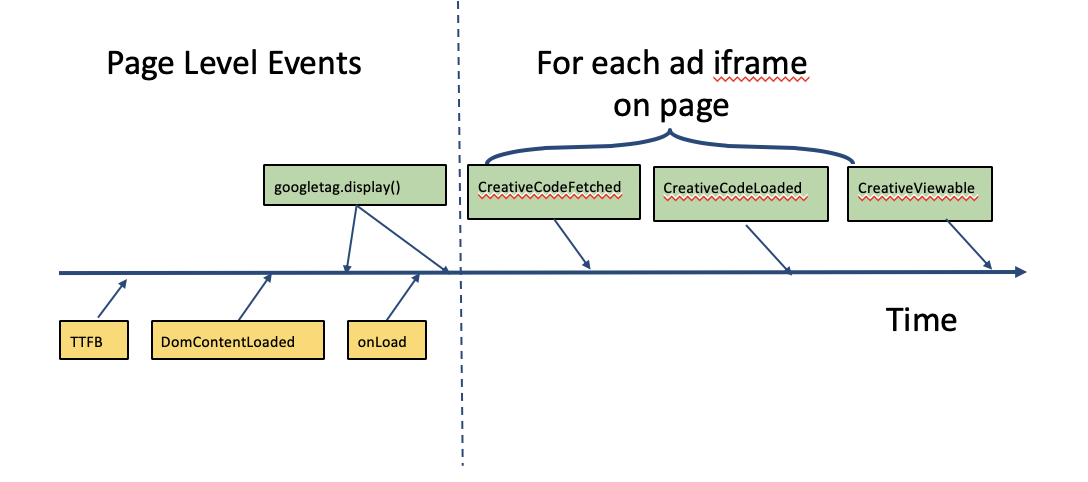
Background
There are three ways of making money on the web: Subscriptions (e.g Netflix), eCommerce (e.g Amazon) or Advertisements (e.g Facebook) and all three monetization methods can be improved by improving page speed . There are tons of statistics to support the page speed impact but they are usually light on the last category and hence this post seeks to address the impact of page load performance on advertisement revenue.
Motivation
Just about every aspect we discuss in the performance community applies to ads as an element of the web. Since we speak of Page Weight, I wrote last year about Ad Weight. Just like we have navigation timing for page performance, there is a timing for ads that any publisher can beacon back.

Now that we have RUM measurements for each ad, the next question is to analyze what causes them to move earlier (or later) and their business impact.
Results
Normally a page load is typically defined as when the onLoad event fires whereas in our case for publishers it is defined as the time when the first ad is displayed. Most of the time this call is issued in the proximity of onLoad event that I would call it page load time in the rest of the article.
In a custom study for a top US publisher we simulated artificial delays from the browser to the ad server in increments of 100ms using network link conditioning. We found that the relationship is fairly linear to say that 1 second of delay equals to loss of 3% revenue for them or a 100 ms delay leads to 0.3% loss of revenue. While this is a study of just one publisher, I have observed similar patterns of linearity across the top Comscore sites that leads me to make the following generalization for the approximate relationship between ad revenue and page performance:

Incremental Revenue Add vs Performance Reduction
Assume a company that makes $6 million annually in ad revenue and their site takes 20 seconds for their page to load. If they reduce the load time by half they would make extra $750K in additional revenue, because:
6,000,000 * 0.125 = 750,000
If they reduce it by 16 seconds (make it 80% faster) then they double their existing revenue all else being equal.
It’s kind of an S-Curve where the maximum revenue benefits kick in once you halve your load time (rather than 10-20% improvement) but fairly slowly when you shave in the range of 10-50% of the load time. It tapers off once you reduce 75% of the load time to a plateau.The shape is fairly standard across publishers but the exact revenue values and load times change. This is why I chose to represent in percent improvement and incremental revenue add rather than specific values.
The publisher also accrues other benefits from better page speed like:
- Increased viewability (most ads do not get paid until 50% of their pixels are visible in the viewport for at least 1 second)
- Reduced bounce rate (more opportunity to show ads)
- Increased session depth (because the site is snappy to users)
- Greater number of pager per visit (most users spend fixed amount of time browsing news sites).
You can really double your ad revenue by reducing the page load in half.
Conclusion
Any given publisher page load time is affected by three factors: page size, order of loading web elements and the volume of requests. Keeping the page size to minimum, loading only the visible content above the fold first and reducing the number of requests will keep you in good state.
Most publishers try to optimize ad revenue by changing demand providers or doing a bunch of optimizations within the ad world but improving page speed is a sure-shot way of increasing revenue for any publisher. This is particularly relevant in the time when their revenue is under pressure due to ad blockers and a host of other external factors. If you are interested in doing a study for your favorite publisher let me know and I’ll be happy to do that.
Seasons Greetings and Merry Christmas to all of you!
